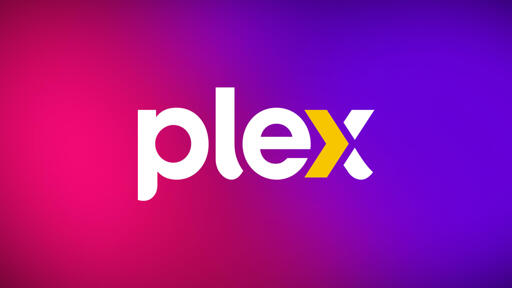Ahoy mateys, it’s time to setup Jellyfin if you prefer not to pay for the privilege of self-hosting your own content.
cross-posted from: https://programming.dev/post/27204525
We are also changing how remote playback works for streaming personal media (that is, playback when not on the same local network as the server). The reality is that we need more resources to continue putting forth the best personal media experience, and as a result, we will no longer offer remote playback as a free feature. This—alongside the new Plex Pass pricing—will help provide those resources. This change will apply to the future release of our new Plex experience for mobile and other platforms.
Yet again, FOSS showing why it’s always the way to go vs proprietary tech. So glad I started my self-hosting journey with Jellyfin!
I’m probably gonna set up Jellyfin this weekend. Any tips for a first timer?
Take it slow.
Don’t ditch Plex just yet but slowly transition the move.
Test it with your usual browser. If playback doesnt work, test with another browser or the phone app.
Thus to all proprietary software!
This headline is misleading. If the owner of the server has Plex pass than the users can use remote streaming as normal. If the owner does not have Plex pass, then the users need Plex pass to use that server remotely
Imo a stupid move by Plex, but as a lifetime Plex pass holder, no one that uses mine will have to worry so I’m relatively unbothered.
I deleted Plex from my barely functional home server.
I’ll give Jellyfin a try. I just want to be able to access my music away from home
Use Finamp for offline Music from Jellyfin
Correction. Use the finamp beta version, unless that recently made it out of beta.
I prefer Symfonium
As in, symfonium.app? If so, seems questionable, given its proprietary nature and unavailability outside the play store. Although, the feature set is interesting.
Edit: yeeeah, no
From their FAQ:
licences checks requires a call to the verification server from time to time
The license is tied to your Google account
If you are worried about opening port 443 on your local firewall I suggest trying to get a cheap vps with decent bandwidth and hosting a reverse proxy on it that points back to your local jellyfin over a tunnel.
Ive been doing it for a few months now and finally got all my family off of Plex.
Can you elaborate more on this? I’m wondering how to set up jellyfin for people outside my lan to use and its unclear to me which method is best.
Or you can dump your media server on another vlan on your same network. That’s what I do.
does this mean the server will need Plex pass or each user individually?
Edit:
IMPORTANT NOTE FOR CURRENT PLEX PASS HOLDERS: For users who have an active Plex Pass subscription, remote playback will continue to be available to you without interruption from any Plex Media Server, after these changes go into effect. When running your own Plex Media Server as a subscriber, other users to whom you have granted access can also stream from the server (whether local or remote), without ANY additional charge—not even a mobile activation fee. More on that later in this update.
I guess the whole idea of this move is to force self-hosters to pay for a Plex pass. But it’s a funny demographic to try to strongarm into a subscription. Most tech savvy self-hosters won’t think twice about spinning up a Jellyfin instance instead, especially given that it’s FOSS. And for those folks with a lifetime Plex pass this makes no difference.,
Self hosters do it to absorb the burden and avoid playing subscriptions. I don’t pay for Netflix because I don’t want to have the monthly fee (among other things), I host Plex myself and deal with all the server and library maintenance. If I have to pay a subscription to self host it’s a step backwards lol.
I bought the lifetime back in 2013 so I have no complaints, but the month to month is a rip off.
Yeah but anyone who is seriously using Plex already paid for one so I don’t get the outrage
I found this elsewhere and it seems to clear up the issue, for me at least:
The new “Remote Watch Pass” is primarily for users who stream from servers owned by individuals without a Plex Pass. For example, if your friend runs a Plex server but doesn’t subscribe to Plex Pass, their remote users will need a Remote Watch Pass to continue streaming after the changes take effect. Because you have a Plex Pass, your remote users will continue to be able to stream from your server remotely without needing to purchase the remote access pass.
And just found this from the FAQ on the announcement page:
I do not have a Plex Pass, but stream remotely from a Plex Media Server:
To stream remotely starting on April 29, 2025, you will need a Remote Watch Pass or Plex Pass subscription on your account or the admin of the Plex Media Server from which you stream will need a Plex Pass subscription on their account.
And so it begins …
Does anyone have any helpful guides on setting up jellyfin with a certificate so they can privately host it while also keeping it secure and up to date? I think if using docker it would make sense to use compose and configure traeffic proxy and use let’s encrypt for certificates.
Plex takes care of this for you with their cert and authentication systems. I feel like if user management and secure authentication is easy to set up then that is the primary reason to leave Plex. If I can just hand out accounts to anyone whom I would like to access my instance with ease then my family members could easily access it.
If one was to host from the home, using something like tailscale to host it online with forwarding a port would also be ideal.
Look into a thing called Caddy. It can do a few things but it makes certificates super easy. You will likely need to buy a domain tho. They can be cheap if you don’t care what its called.
Cool. I was just looking to see if someone had a guide because I’m trying to understand the pitfalls of doing it this way and I’m curious if anyone else has opened up Jellyfin to the world.
I was about to get a Plex Pass, but I saw this news today.














